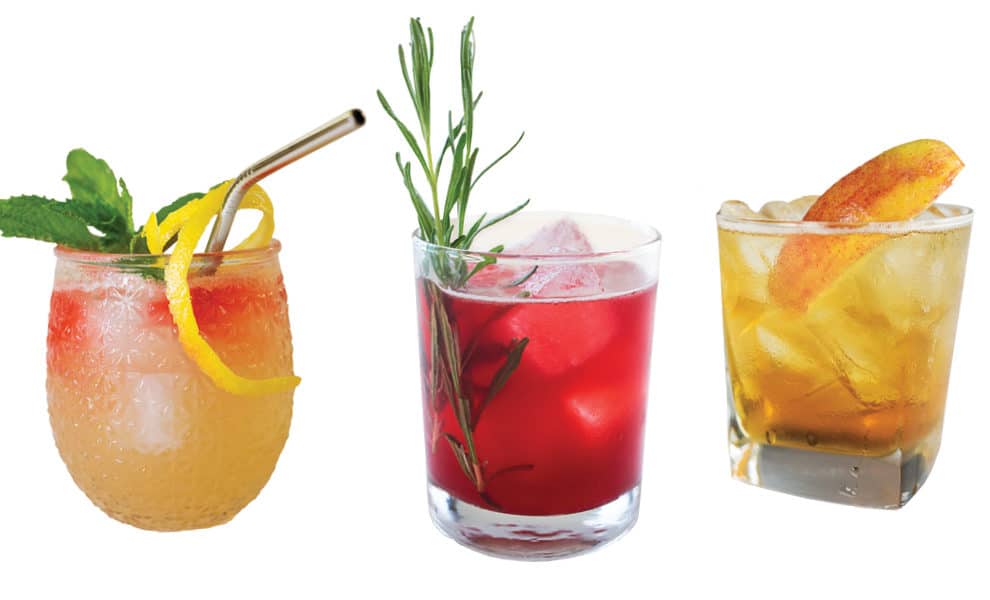
Herb Appeal
From crisp, subtle, and floral, to complex, aggressive, and aromatic, fresh herbs can excite and amplify your favorite cocktail. How best to use those botanicals is another matter. Before grabbing shears and muddling a garden into a shaker, allow Michael Gray, account manager of an RNDC beverage distributor and former GM of Plat 99 at The Alexander hotel, to be your spirit guide. Understanding source materials for your base alcohol—sugar cane for rum or cereal grain for whiskey—is the starting point for crafting a cocktail. Once the base is established, at-home bartenders can begin experimenting with flavor combinations and extracting aromas. The key is finding balance.
GIN
It’s versatile, yes, but might be the trickiest for your average home bartender. Sage, rosemary, and mint are all going to open up to create a floral note with an American gin. London Dry gin, which has more juniper, anise, cardamom, and coriander, has a classic botanical build, so you can pull more spices from it. As long as the flavors are subtle, you could really create something unique.

RUM
Since rum is sugar-sourced, you’ll need to cut back on the sweet stuff used in the cocktail and increase the citrus. Consider making a three-ingredient rum cocktail, like a daiquiri, with a rosemary-sage syrup.

WHISKEY
With aged spirits like this that have maturity to them, consider using passive botanicals and flavors: basil, lavender, and mint.

Dos and Don’ts of at-home cocktail crafting with herbs:
DO: Make a syrup or shrub on your stovetop by combining equal parts sugar and water over a boil. Toss in a handful of your favorite herb and let it impart its essence. Bottle and keep refrigerated. “A shrub is a classic cocktail ingredient. It is a drinking-vinegar base which has been infused with herbs, fruits, and spices,” says Gray, who suggests pairing watermelon and mint. Blood orange, ginger, and lavender are another great combo.
DON’T: Take out pent-up frustration by over-muddling the herb. What you’re doing is just destroying its beautiful aroma.
DO: Try ingredients by plucking them from your garden or asking for a sample at the farmers market. If you don’t have culinary experience, expand your palate. “I always educate young bartenders to taste as much as possible,” Gray says.
DON’T: Infuse flavors directly into a base spirit. “If you take a bottle of vodka and put some fruit in there to make your own flavored vodka, you’ll usually end up messing up the spirit,” says Gray.
DO: “Wake up” the herb by gently smacking it against the palm or back of your hand to release aromas and oils in the veins. “If you’re just using it as a garnish or putting it on top for the aroma, you definitely need to revive that herb,” says Gray.
DON’T: Overwhelm the spirit’s natural character by using too aggressive of an herb. “A mint julep pairs well with the flavors of vanilla and caramel that whiskey picks up from the barrel,” Gray says. “But those flavors wouldn’t do well against sage or rosemary.”
All photos by Mary McClung





